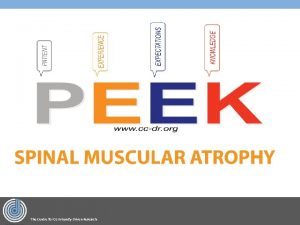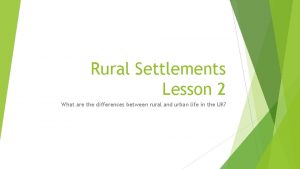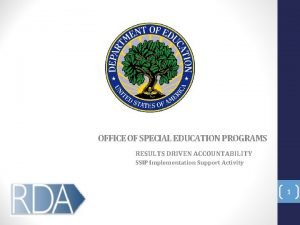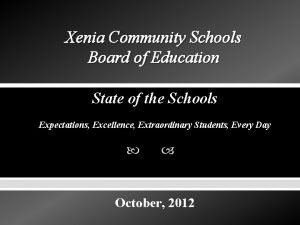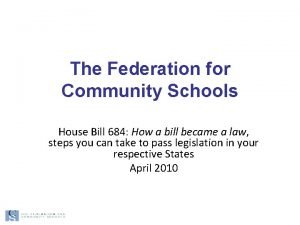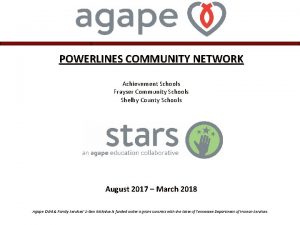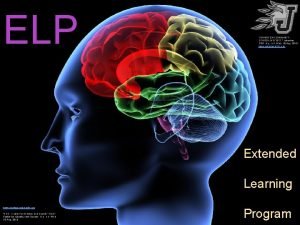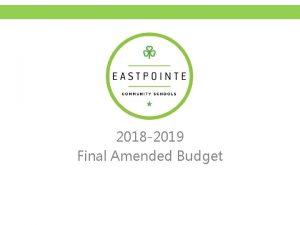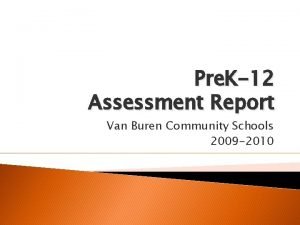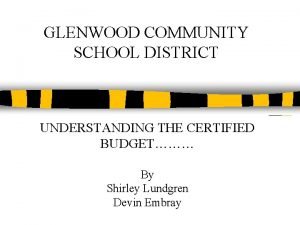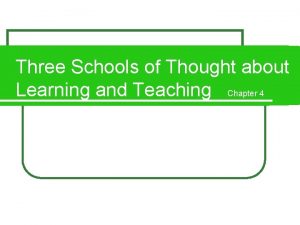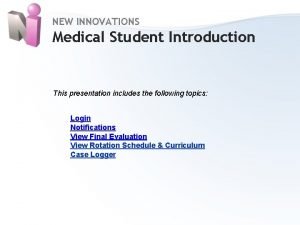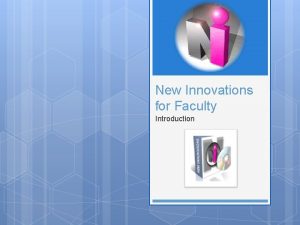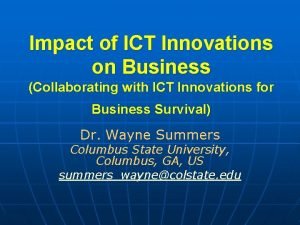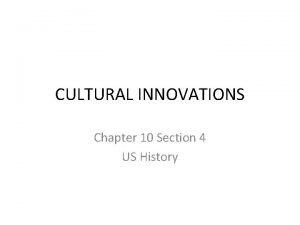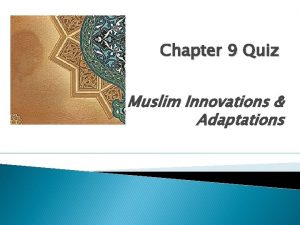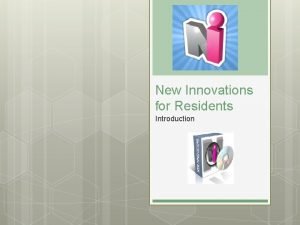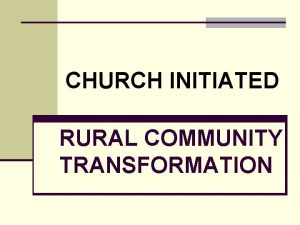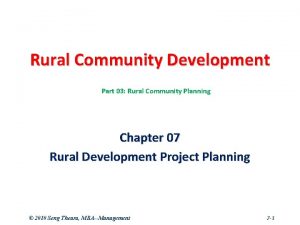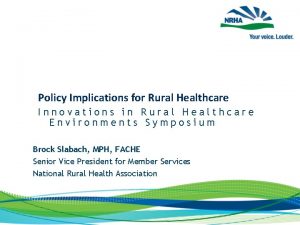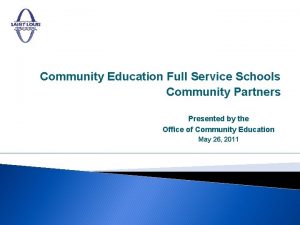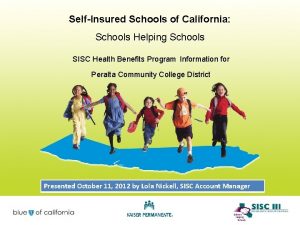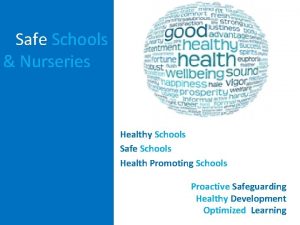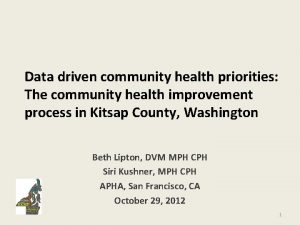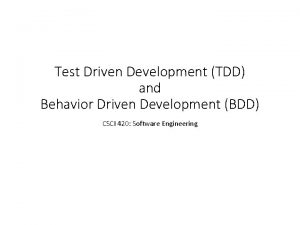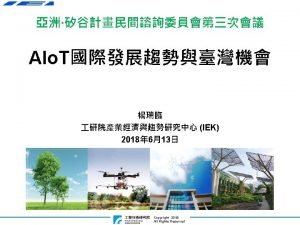Community Driven Innovations in Rural Education Rural Schools


























- Slides: 26

Community Driven Innovations in Rural Education

Rural Schools & Communities “Schools play a critical role in the well-being of small communities and towns that serve as rural hubs, providing a focal point of activity, a sense of civic pride, and a reason for families to stay in place. Schools are an integral thread in the community fabric; they provide a sense of purpose. Rural Education is a linchpin issue in rural economic development. ” 1

Rural Schools & Communities For these reasons, many innovations in rural education are spearheaded by community advocates such as: non-profits, institutes, and colleges/universities. These organizations are typically effective at differing levels (national, regional, or district). Also, many of the community-driven initiatives are so new, there is little to no supporting research that qualifies how effective they are.

The Problem Closing the Achievement Gap is a rural issue too. 22% of rural students are considered minority students. 2

The Problem Those responsible for minority education have isolated the educational process from the culture of the minority being served. This factor and others (cultural bias, lack of opportunity, and background) have contributed to lower levels of educational attainment of rural minorities. 3 There is also a dominant urban bias in educational policy in the U. S. , which must now be expanded to rural issues. 3

The Problem Within this larger scope, the needs of rural Native Americans, Mexican Americans, Black Americans, and other minorities must not be overlooked. These groups have been severely disadvantaged in terms of educational facilities, access to education, financing, appropriate curriculum, and representative school governance. 3 As programs begin to develop (albeit slowly) for rural minority youth, it is critical that adequate research accompanies these developments. 3

Program for Native American Students American Indian Institute for Innovation The Institute focuses on reservationbased American Indians and sends them to an intensive 6 week summer program. The Institute has a very high success rate and a near 100% graduation rate for American Indians who have completed the program. 4

The Problem Poor teacher preparation, lack of resources, and a lack of funding

Non-Profits The Rural School and Community Trust This is a national non-profit aimed at implementing placebased education for students, improving teacher quality and school leadership, as well as advocating for state educational policies specifically tailored around equitable and adequate funding for rural schools. 5

Non-Profits The Rural School and Community Trust’s “Policy Building” and “Capacity Building Programs” improve the links between schools and rural communities to improve educational quality and community life and to affect state educational policy. 5 The Rural School and Community Trust sees itself primarily focused on communities plagued by poverty and racism or challenged by declines in population and fundamental economic change. 5

Non-Profits The Rural School and Community Trust is the convener of the “Rural Equity Collaborative, ” which aims to improve the equity and adequacy of school finance systems in rural communities with high poverty rates. 5 The Trust’s website provides state-by-state links to issues, projects, and rural advocacy groups. 5 The Trust has also established the “Rural Education Finance Center, ” which attempts to reduce fiscal inequality for rural schools. 5

Non-Profits The Rural Schools Partnership (Ozarks region) 1 1. Developing alternative resources (such as tech support, fund management, and legal counsel) 2. Promote collaborations and partnerships (building relationships with local foundations through fund development and local education) 3. Supporting place-based education programs (such as the claymobile—a fully stocked van for clay workshops including teachers)

The Problem Brain Drain

Teacher Recruitment Ozarks Teaching Core The Ozarks Teacher Core has identified rural “brain drain” as a significant problem of rural education, wherein, the smartest students typically leave rural areas after graduation and do not return to reinvigorate their communities. 6 To curtail this trend, the Ozarks Teaching Core uses a generous fund and seeks to retain teachers for their home communities (for at least three years). 1

Are there other ways the community is getting involved?

Local Colleges Help Out Dual Degree Programs The Nebraska College of Technical Agricultural has teamed up with Hayes Center Public School system to offer dual degree credits (high school & college). Program content is approximately 50/50 agriculturally-based as well as the traditional core courses. 7

Local Colleges Help Out The South Dakota School of Mines and Technology The School of Mines offers a variety of summer programs for kids to learn about science. They offer classes for elementary, middle, and high school students. 8

Another Problem Extremely long commute for students, most of whom typically ride the school bus

Extending the day by Educating on the Bus West Virginia distributes IPod touches to students in four extremely rural district as part of the “Read WV Campaign” to encourage reading. The Ipods are pre-loaded with e. Books and audio books. 9 The distribution will aid in literacy learning, but, the other standards are not mentioned.

Extending the day by Educating on the Bus In Pope County, Arkansas, the district has redesigned several school buses servicing rural areas to be mobile classrooms complete with computer screens, earphone jacks, Wi-Fi, and bus tracking software. During the long commute, the bus airs educational television such as: PBS, NASA, Discovery, CBS News, and the Smithsonian Institute. 10

Extending the day by Educating on the Bus According to a 2010 NPR report on “All Things Considered, ” 25 school districts (actually both rural and urban) have signed up for Wi. Fi through the Autonet service. 11 Still, there is a problem of equity because every student does not own a laptop with wireless capabilities. Julie Hudson, of Vanderbilt University, has worked with the Aspirnaut program in rural Arkansas on attaining Wi. Fi on school buses and providing laptops to students. 11

For Consideration As mentioned in the beginning, many of these innovations are taking place at differing levels of geographical implementation. School bus education is happening in specific districts as well as the bridge programs through their local colleges. The Ozarks Teacher Core is recruiting teachers specifically for the Ozarks region. However, the Rural School and Community Trust is the only national organization mentioned here that provides resources to rural schools in every state.

References 1. Rural Schools Partnership. (2009). Retrieved from: http: //www. ruralschoolspartnership. org/about. 2. Rural Schooling: Necessity is the Mother of Innovation (Power. Point Slides). (2011, January 24). National Center for Research on Rural Education. Retrieved from: http: //r 2 ed. unl. edu/presentations/2011/ 012411_Cicchinelli/012411_Cicchinelli. pdf 3. Just, A. & Edington, E. (1980). Education of Rural Minorities in the United States and Selected Countries. Washington, D. C. : ERIC

References 4. American Indian Institute for Innovation. (2009). Retrieved from: http: //www. theaiii. com/index. php? page=home 5. Rural School and Community Trust. (2011). Retrieved from: http: //www. ruraledu. org/ 6. Schulken, M. (2010, October 1). Momentum Builds for Rural Teacher Corps. Education Week. Retrieved from: http: //blogs. edweek. org/edweek/way_on_national_rura l_teacher_corps. html? qs=rural+non-profit.

References 7. Rural High School to Offer Associate’s Degree. (2008). High Plains/Midwest AG Journal. Viewed on 20 October 2011. Retrieved from http: //www. hpj. com/archives/2008/mar 3/ 8. South Dakota School of Mines & Technology. " They have fall workshops for grades 3 -8 as well as intensive Summer Camps for students broken into the following age ranges: elementary, middle and high school: http: //sdmines. sdsmt. edu/learn/youth 9. Courrege, D. (2011, August 19). Rural Schools Make Learning Part of Long Bus Rides. Education Week. Retrieved from: http: //blogs. edweek. org/edweekrural_education/20 11/08/ rural_schools_promote_reading_on_the_bus. html ? qs=rural

References 10. Katims, L. (2010, December 17). High-Tech School Bus Teaches Students on the Road. Converge. Retrieved from: http: //www. convergemag. com/classtech/High-Tech. School-Bus. html 11. O’Dowd, P. (2010, May 17). School Buses Now Take Wireless Internet for a Ride. NPR: All Things Considered. Retrieved from: http: //www. npr. org/templates/story. php? story. Id =126888193
 Huntsville city schools powerschool
Huntsville city schools powerschool Safety reach target
Safety reach target Centre for community driven research
Centre for community driven research Characteristics of rural community slideshare
Characteristics of rural community slideshare Results driven accountability in special education
Results driven accountability in special education Xenia board of education
Xenia board of education Federation for community schools
Federation for community schools Frayser community schools
Frayser community schools Johnstoncsd
Johnstoncsd Coalition for community schools
Coalition for community schools Eastpointe community schools
Eastpointe community schools Monticello community schools
Monticello community schools Van buren community schools
Van buren community schools Glenwood community schools
Glenwood community schools What are the three main schools of thought
What are the three main schools of thought Gilbert public schools special education
Gilbert public schools special education Russian empire expansion 1450 to 1750
Russian empire expansion 1450 to 1750 New innovations login
New innovations login New-innov
New-innov Lucent technologies bell labs innovations
Lucent technologies bell labs innovations Innovation foresight
Innovation foresight Ict innovations for business
Ict innovations for business Chapter 8 lesson 4 cultural innovations
Chapter 8 lesson 4 cultural innovations Why was polo a popular sport among wealthy muslims
Why was polo a popular sport among wealthy muslims New innovations duty hours
New innovations duty hours Next level innovations
Next level innovations Marketing real people real decisions
Marketing real people real decisions


